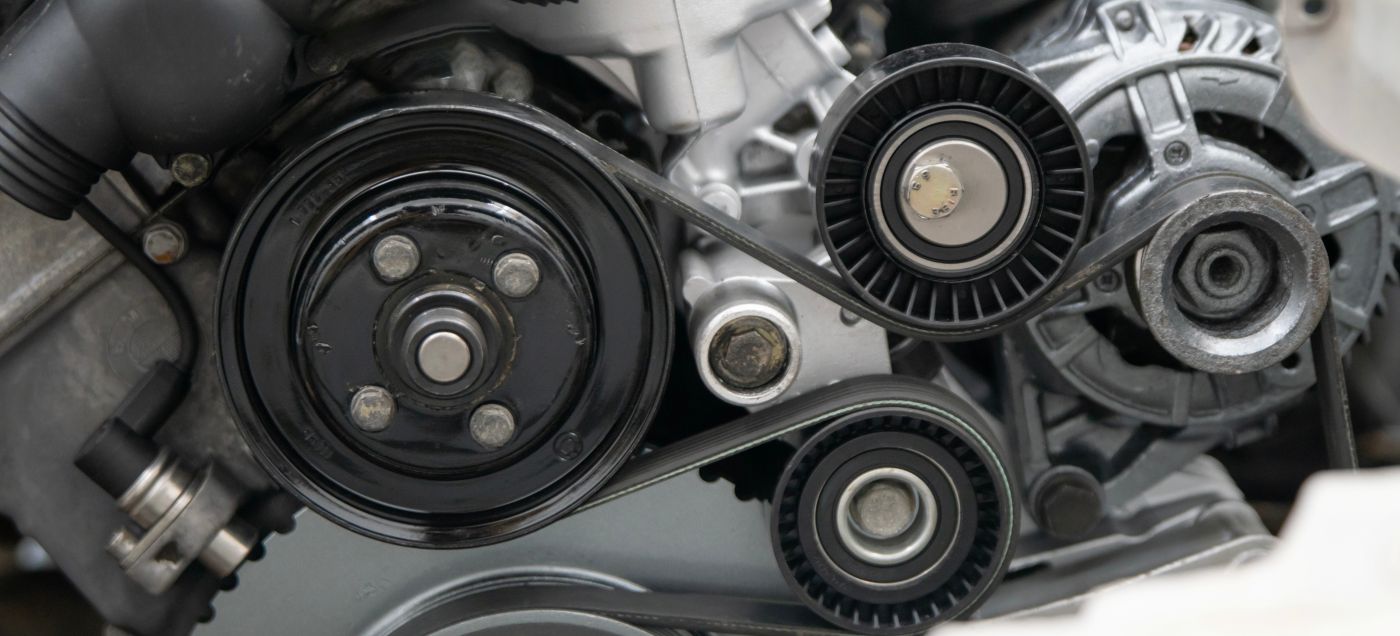



















other services
Every engine relies on a timing system to keep pistons and valves moving in sync. Some vehicles use a timing belt, others use a timing chain, and knowing the difference matters for maintenance and repair costs. At Good News Auto, we inspect and service both systems, helping Edmonton drivers avoid unexpected breakdowns and costly engine damage.
What Is a Timing Belt?
A timing belt is made of reinforced rubber with teeth that grip gears to keep engine components in sync. Belts run quietly and are lighter than chains, but they wear down with age and mileage.
Most manufacturers recommend timing belt replacement every 90,000 to 160,000 kilometers. When ignored, a broken belt can cause bent valves, damaged pistons, or even total engine failure.
What Is a Timing Chain?
A timing chain looks and functions much like a bicycle chain, only stronger. Built from metal, chains are designed to last much longer than belts and often remain in place for the life of the engine.
Chains are not maintenance-free, however. Over time they can stretch or their tensioners can wear out, leading to noise and poor performance.
Lifespan and Maintenance Differences
The key difference is predictability. Belts have set replacement intervals, so you know when to budget for service. Chains may not require replacement for hundreds of thousands of kilometers, but when they do fail, the repair is usually more expensive.
- Belts: Quieter operation, lower upfront cost, scheduled replacement
- Chains: Durable, less frequent service, but higher replacement cost if needed
Common Failure Signs to Watch For
Spotting early signs of wear can prevent engine damage:
- Timing belt issues: Engine misfires, ticking noise, oil leaks near the timing cover, sudden stalling
- Timing chain issues: Rattling or clattering at startup, rough idle, check engine light for camshaft timing
If you notice these symptoms, it is time to schedule an engine service.
Replacement Costs and Manufacturer Guidelines
Replacing a timing belt is usually a planned service and can cost less than an emergency repair after failure. Timing chains cost more to replace due to labor but are serviced less often. The best practice is always to follow your manufacturer’s maintenance schedule and have inspections during standard maintenance.
How Edmonton Driving Conditions Affect Timing Components
Cold winters and frequent stop and go driving in Edmonton put extra stress on timing systems. Cold starts can make chains rattle more, while long idling can wear on both belts and chains. Seasonal vehicle inspections help catch these issues before they cause major damage.
Get Timing System Services at Good News Auto
Whether your vehicle uses a belt or a chain, timing issues are not something to ignore. At Good News Auto, our team provides thorough inspections, honest advice, and professional replacements when needed.
If you are unsure whether your car has a timing belt or chain, stop by the shop and we will check for you. Book your appointment today and keep your engine running smoothly on Edmonton roads.




